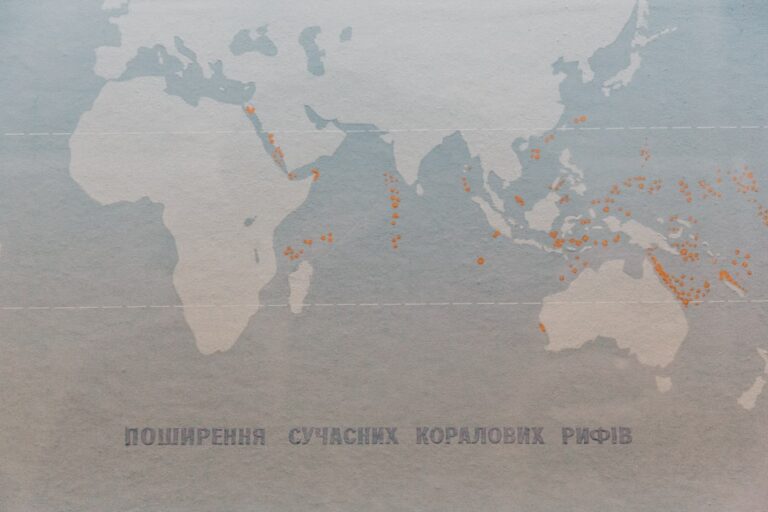Communal land systems are characterized by collective ownership and management of land resources by a community rather than by individuals. This system is often rooted in traditional practices and cultural norms, where land is viewed not merely as a commodity but as a shared resource integral to the community’s identity and survival. In many indigenous cultures, communal land is held in trust for future generations, emphasizing stewardship over exploitation.
The land is often used for agriculture, grazing, and gathering, with decisions about its use made collectively through established customs or governance structures. The significance of communal land systems extends beyond mere agricultural practices; they foster social cohesion and cultural identity. For instance, in many African communities, land is tied to ancestral heritage, and its management involves rituals and communal gatherings that reinforce social bonds.
The collective approach to land use can also lead to sustainable practices, as communities often prioritize long-term ecological health over short-term gains. However, these systems face challenges from external pressures such as globalization, land privatization, and legal frameworks that favor individual ownership, which can undermine traditional communal practices.
Key Takeaways
- Communal land systems involve shared ownership and management of land by a community, often based on traditional customs and practices.
- Royal land systems have played a significant role in history, with monarchs and ruling families holding ownership and control over vast territories.
- Individual land ownership can have a significant impact on society, influencing economic development, social dynamics, and political power.
- Comparing the advantages and disadvantages of communal, royal, and individual land systems can provide insights into their respective impacts on communities and societies.
- The evolution of land ownership systems reflects changes in social, economic, and political structures, as well as shifts in cultural and legal norms. The future of land ownership will likely involve balancing traditional practices with modern demands and challenges.
The Role of Royal Land Systems in History
Royal land systems have played a pivotal role in shaping the political and economic landscapes of various societies throughout history. These systems typically involve land being owned by a monarch or ruling elite, who grants usage rights to subjects in exchange for loyalty, military service, or tribute. This arrangement has been prevalent in feudal societies, where the king or queen held ultimate authority over land distribution.
The feudal system in medieval Europe exemplifies this dynamic, where lords were granted parcels of land by the monarch and, in turn, provided protection and governance to the serfs who worked the land. The implications of royal land systems extend beyond mere governance; they often dictate social hierarchies and economic structures. In many cases, the concentration of land in the hands of a few led to significant disparities in wealth and power.
For example, in ancient Egypt, the Pharaoh controlled vast tracts of land, which were worked by peasants who had little to no rights over the produce of their labor. This system not only reinforced the authority of the ruling class but also created a dependency that stifled social mobility. Over time, as societies evolved and revolutions occurred, the legitimacy of royal land systems was increasingly questioned, leading to reforms that sought to redistribute land more equitably.
Individual Land Ownership and Its Impact on Society

Individual land ownership emerged as a dominant paradigm in many parts of the world, particularly with the rise of capitalism and the industrial revolution. This system allows individuals to own property outright, providing them with rights to use, sell, or lease their land as they see fit. The concept of private property is often seen as a cornerstone of economic development, fostering innovation and investment.
For instance, in the United States, the Homestead Act of 1862 encouraged westward expansion by granting individuals ownership of land, which spurred agricultural development and contributed to the nation’s economic growth. However, individual land ownership also has profound social implications.
The commodification of land can result in speculative practices that prioritize profit over community needs. In urban areas, for example, gentrification often displaces long-standing residents as property values rise due to individual ownership dynamics. Furthermore, individual ownership can create tensions within communities that once thrived under communal systems, as personal interests may conflict with collective well-being.
Comparing the Advantages and Disadvantages of Communal, Royal, and Individual Land Systems
When comparing communal, royal, and individual land systems, it becomes evident that each has its unique advantages and disadvantages that impact society differently. Communal land systems promote social cohesion and sustainable resource management but can struggle against external pressures that favor privatization. The collective decision-making process can be slow and may not always adapt quickly to changing economic conditions or environmental challenges.
In contrast, royal land systems can provide stability and centralized governance but often perpetuate inequality and limit individual freedoms. The concentration of power in the hands of a few can lead to exploitation and disenfranchisement of lower classes.
While royal systems may facilitate large-scale agricultural production or infrastructure development due to centralized control, they can also stifle innovation by discouraging individual initiative. Individual land ownership offers autonomy and encourages investment but can exacerbate social inequalities and lead to environmental degradation if not managed responsibly.
The Evolution of Land Ownership Systems
The evolution of land ownership systems reflects broader societal changes influenced by economic development, cultural shifts, and technological advancements. Historically, many societies began with communal systems rooted in shared resources and collective management. As populations grew and economies became more complex, the need for more structured forms of ownership emerged.
The transition from communal to royal systems often coincided with the establishment of centralized governments that sought to exert control over resources for taxation and military purposes. The industrial revolution marked a significant turning point in land ownership dynamics. The rise of capitalism led to an emphasis on individual property rights as a means of fostering economic growth.
This shift was accompanied by legal reforms that recognized private ownership as a fundamental right. In contemporary society, we see a blend of these systems; while individual ownership predominates in many regions, communal practices persist in various forms, particularly among indigenous populations. Additionally, modern movements advocating for land reform seek to address historical injustices related to land dispossession and promote equitable access to resources.
The Future of Land Ownership: Balancing Tradition and Modernity

As we look toward the future of land ownership, the challenge lies in balancing traditional practices with modern economic realities. Globalization and urbanization continue to reshape landscapes and influence how communities interact with their environments. In many cases, there is a growing recognition of the value of communal land systems in promoting sustainability and resilience against climate change.
Initiatives that integrate traditional ecological knowledge with contemporary environmental practices are gaining traction as communities seek to protect their lands from exploitation. Moreover, innovative models are emerging that blend elements from various ownership systems. For instance, community land trusts are being established in urban areas to provide affordable housing while preserving communal values.
These trusts allow communities to collectively own land while ensuring that it remains accessible to future generations. Similarly, policies aimed at recognizing indigenous land rights are gaining momentum globally as societies acknowledge the importance of traditional stewardship practices in maintaining biodiversity. In conclusion, the future landscape of land ownership will likely be characterized by a hybrid approach that respects cultural heritage while embracing modernity’s demands.
As societies grapple with issues such as climate change, social inequality, and urbanization, finding ways to harmonize different ownership models will be crucial for fostering sustainable development and ensuring equitable access to resources for all members of society.
In exploring the complexities of land systems, the article “Communal, Royal, and Individual Land Systems” delves into the intricate ways land ownership and management have evolved over time. A related article that provides further insight into the societal structures influencing these systems is “India as a Plural Society: Social Institutions and Practices.” This piece examines the diverse social frameworks and practices in India, offering a broader context for understanding how communal and individual land systems operate within a pluralistic society. For more information, you can read the full article by following this link: India as a Plural Society: Social Institutions and Practices.
FAQs
What are communal land systems?
Communal land systems are systems in which land is owned and managed collectively by a community or group of people. This type of land system is often found in traditional societies and is based on shared rights and responsibilities.
What are royal land systems?
Royal land systems are systems in which land is owned and controlled by a monarch or ruling authority. In these systems, the land is often distributed to nobles or other individuals as a form of reward or as part of a hierarchical structure.
What are individual land systems?
Individual land systems are systems in which land is owned and managed by individuals. This type of land system is based on private property rights and is commonly found in modern, capitalist societies.
How do communal, royal, and individual land systems differ?
Communal land systems are based on collective ownership and management, while royal land systems are based on ownership by a ruling authority, and individual land systems are based on private ownership by individuals. These systems differ in terms of ownership, management, and the rights and responsibilities of landholders.
What are some examples of communal, royal, and individual land systems?
Examples of communal land systems include traditional indigenous land management practices, such as the Maasai in East Africa. Examples of royal land systems include feudal land systems in medieval Europe, where land was granted to nobles by the king. Examples of individual land systems include private property ownership in modern capitalist societies.






















+ There are no comments
Add yours